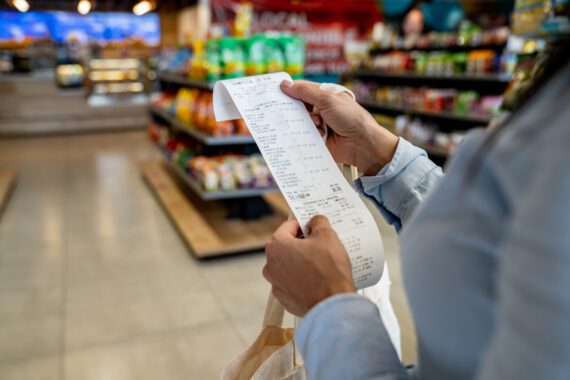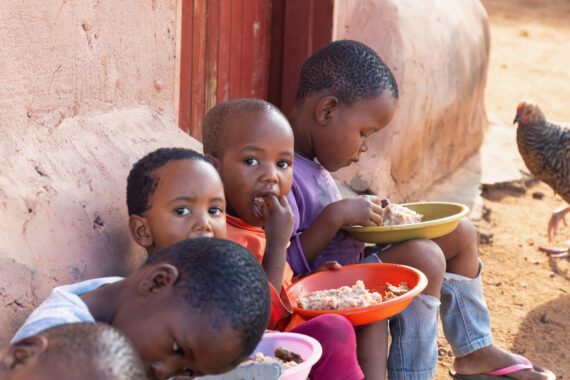By Florencia Makk
Chronic hunger continues to affect hundreds of millions of people worldwide, but even within one country, hunger and food insecurity are more common and more severe in some communities than others.
Bread for the World has long emphasized what, in the words of the United Nations, is the “central, transformative promise” of the U.N. Sustainable Development Goals: “Leave no one behind.” Ending hunger means ending hunger for everyone. Achieving this goal requires centering the needs of people who are at higher risk of hunger.
Hunger and related problems do not respect borders. There are people facing hunger in every country, including wealthy countries like the United States. Every year more than 40 million people in the United States are food insecure, meaning that they don’t have regular, reliable access to nutritious food in quantities necessary for a healthy, active life. It is not surprising that people who live in communities with high poverty rates are more likely to be food insecure.
One such community is made up of people who live in the U.S. without documentation. From 2007 to 2021, the size of this group was largely stable at about 11 million people. There has likely been an increase since 2021, but researchers reported in March 2024 that more recent data was not available.
One major barrier to food security for undocumented people is that they are generally excluded from federally-funded nutrition programs. In times of need, people born in the U.S. and naturalized citizens are usually able to access federal nutrition programs such as the Supplemental Nutrition Assistance Program (SNAP) to help put food on the table. But undocumented individuals generally do not qualify for these programs.
It is difficult to obtain national-level statistics on the level of food insecurity among undocumented people compared with U.S. citizens and permanent residents, since data on whether people are undocumented is not routinely collected by the federal agency that measures food security. However, some information is available from community and state-level efforts to determine the severity of the problem and seek effective solutions.
A study of food security among immigrants was conducted in Massachusetts in July 2020, with interviews available in 16 languages. Families who were immigrants but not undocumented were less likely to report running out of food or grocery money than families with at least one undocumented member – 59 percent among documented immigrants, compared with 78 percent among undocumented immigrants. It goes without saying that both of these rates are far too high. Clearly, other factors continue to put immigrants at much greater risk of hunger, regardless of their immigration status.
Thankfully, a variety of organizations are working to prevent or reduce hunger among undocumented people. They are located in areas with large immigrant populations – mainly metropolitan areas and along the U.S. border with Mexico.
For example, 10 years ago in San Diego, the International Rescue Committee established its “New Roots” food security and agriculture program network with the goal of supporting immigrants in accessing land and agribusiness opportunities. It has since grown to 10 locations and offers a variety of programs that support immigrants, particularly refugees, in food access, nutrition, and agriculture. It now reaches about 13,000 people annually.
California has a program that provides benefits similar to SNAP for some people who would otherwise qualify for SNAP but are not eligible because they are undocumented. The California Food Assistance Program (CFAP) keeps almost 700,000 Californians, including more than 300,000 children, above the poverty line each year.
Nonetheless, much more needs to be done, even in states that have taken steps to help. A recent report based on data from UCLA found that 45 percent of California’s undocumented immigrants are food insecure and that 64 percent of children 17 and younger live in food-insecure households.
A related issue concerns immigrants who are in fact eligible for some safety-net programs. The Urban Institute conducted a study that found that one in seven eligible immigrant families did not enroll in programs like SNAP or Medicaid. One group of people with decisions to make about applying for benefits are parents in so-called “mixed status” families, where some members of the family are U.S. citizens or legal residents and others are undocumented. Most often, they themselves are undocumented, but one or more of their children are U.S. citizens by birth and qualify for SNAP benefits.
Why do people decide not to apply for government nutrition or healthcare programs? Researchers in one study summed up many of the reasons as lack of access to resources, social vulnerability, and/or economic uncertainty.
The “public charge” rule is used to exclude immigrants who are considered likely to become unable to support themselves in years to come – public charge is a synonym for “welfare recipient.” People who are considered likely to be “public charges” may be denied legal permanent resident status or U.S. citizenship. The Biden administration has reversed the changes to the rule made by the Trump administration. Social service agencies try to provide reassuring facts—for example, receiving SNAP benefits does not affect one’s immigration status—but not everyone has heard about these changes from sources they trust. As a result, many potential applicants for safety-net programs worry that receiving benefits could jeopardize their immigration cases.
There is also still a significant amount of shame or stigma attached to the idea of asking for or receiving assistance. Another factor is that, over the last decade, there have been several changes in the laws that determine who is eligible for SNAP and who is not. People who are uncertain about their eligibility may decide not to take that chance. Finally, many undocumented people work in the “gig” economy. This type of work very often means inconsistent and unreliable pay, which in turn creates much more difficulty filling out federal government applications proving that one is low-income or otherwise eligible.
Bread’s advocacy to end hunger in the U.S. looks closely at the details of how hunger affects different communities so that we can help identify policy improvements that work for everyone.
Florencia Makk is a policy intern in development finance, Policy and Research Institute, with Bread for the World.



